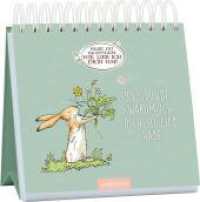- ホーム
- > 洋書
- > 英文書
- > Cinema / Film
Full Description
Television as we knew it is irrevocably changing. Some are gleefully announcing the death of television, others have been less sanguine but insist that television is radically changing underneath our eyes. Several excellent publications have dealt with television's uncertain condition, but few have taken the specific question of what television's transformations mean for the discipline of Television Studies as a starting point.
The essays collected in this volume aim to fill this void. Two fundamental questions string the various contributions together. First, is television really in crisis or is the present not so extraordinary when revisiting television's development? Second, should we invent new theoretical concepts or are our old ones still perfectly relevant? To answer such questions the authors in this volume take up diverse case studies, ranging from the academic series Reading Contemporary Television to Flemish Fiction, from nostalgic programming on broadcast television to YouTube, from tell-sell television shows to public television art in the 1980s.
Contents
After the Break - 2 TELEVISUAL CULTURE - 3 Table of Contents - 6 After the Break, Television Theory Today - 8 1. Questioning the crisis - 12 2. New paradigms - 14 3. New concepts - 15 4. Concluding thoughts - 16 References - 16 Part I: Questioning the crisis - 20 'Unreading' contemporary television - 22 1. Analyzing quality television=and why it is redundant - 24 2. The complexities of television as medium - 26 3. Unreading television - 28 4. Conclusion - 31 References - 32 Caught, Critical versus everyday perspectives on television - 36 1. Media 2.0 and the cultural studies perspective on television - 38 2. The mass communication paradigm in its protoprofessionalized version - 40 3. Conclusion - 47 Notes - 48 References - 49 The persistence of national TV, Language and cultural proximity in Flemish fiction - 52 1. National television in a global era - 52 2. National viewing - 55 3. The Flemish case - 57 4. Conclusion - 61 Notes - 62 References - 62 Constructing television, Thirty years that froze an otherwise dynamic medium - 66 1. An era of constraint - 68 2. The public and the nation: lessons from the Third Reich - 70 3. A television freeze and a Cold War - 72 4. Contextualizing constraint - 74 Notes - 78 References - 78 When old media never stopped being new, Television's history as an ongoing experiment - 80 1. Always already new: the ongoing transformation of television - 81 2. Experimental systems - 83 3. Experiments in television - 85 4. Experimental moments of broadcast/network television - 88 5. Broadcast/network television as an ongoing experiment - 91 6. Post-network experiments - 92 7. Closing remark on television studies - 94 Notes - 95 References - 96 Part II: New paradigms - 100 Unblackboxing production, What media studies can learn from actor-network theory - 102 1. ANT - a very short introduction - 103 2. A mechanics of power - 105 3. Media from an ANT perspective - 106 4. The media's mechanics of power - 108 5. A teaching moment - 110 6. Conclusion - 113 Notes - 114 References - 114 Convergence thinking, information theory and labour in 'end of television' studies - 118 1. Introduction - 118 2. The empirical tendency and information theory - 120 3. Convergence thinking - 124 4. Conclusion - 127 Notes - 129 References - 129 Television memory after the end of television history? - 132 1. Television memory and television history - 133 2. Television memory and audience research - 134 3. The complexity of the concept of television memory - 136 4. Representations of the past on television: television as memory maker - 137 5. Towards a new participative television memory - 140 6. Conclusion - 142 Notes - 143 References - 143 Part III: New concepts - 146 YouTube beyond technology and cultural form - 148 1. Introduction - 148 2. YouTube as technology: homecasting - 149 3. YouTube as social practice: video-sharing - 151 4. YouTube as cultural form: snippets - 154 5. Conclusion - 157 Notes - 158 References - 159 Move along folks, just move along, there's nothing to see, Transience, televisuality and the paradox of anamorphosis - 162 Notes - 175 References - 175 Barry Chappell's Fine Art Showcase. Apparitional TV, aesthetic value, and the art market - 180 1. The value of art on TV - 180 2. The art of selling the work of art - 183 3. Apparitional television - 185 4. Conclusion - 190 Notes - 191 References - 191 About the authors - 194 Index - 198





